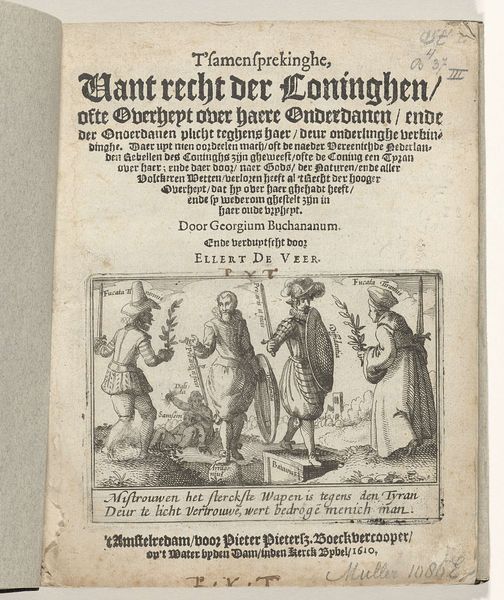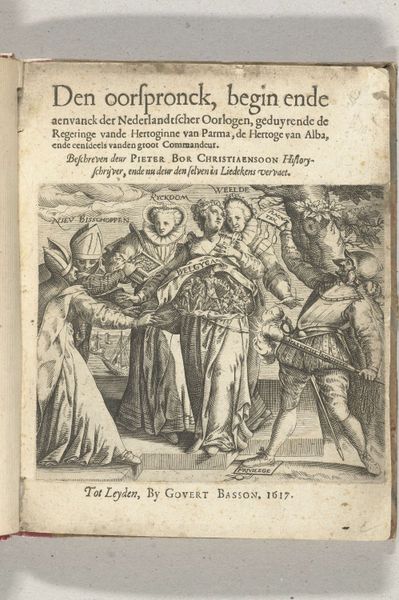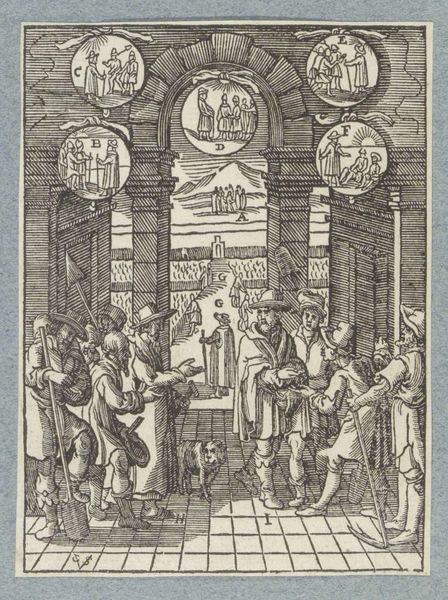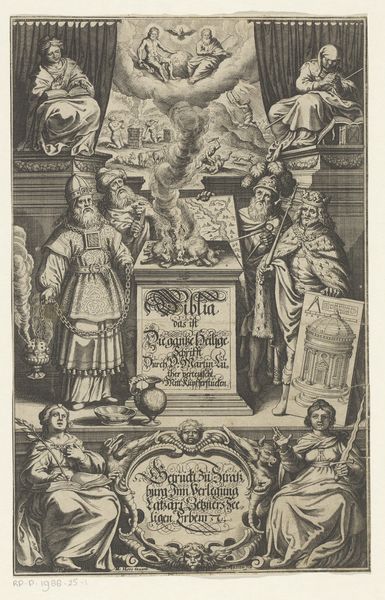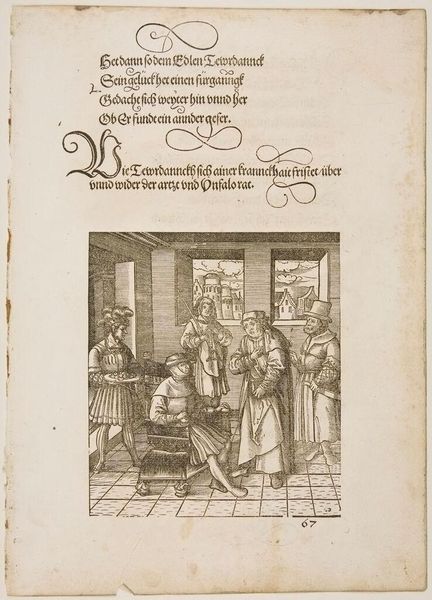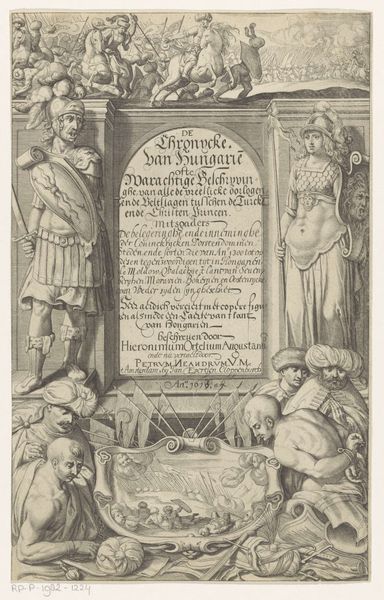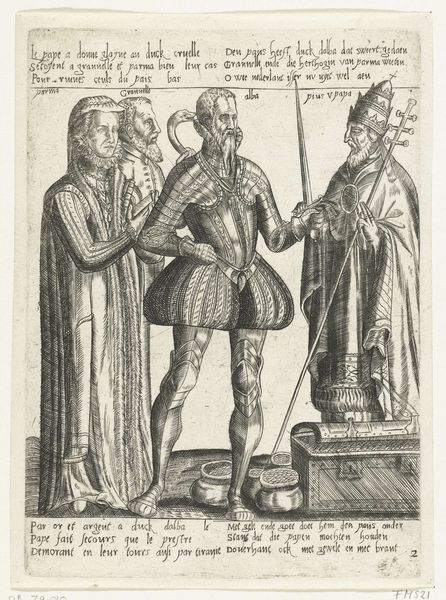
Titelprent van het pamflet uit 1618 getiteld: Gulden Legende Van den Nieuwen St. Jan 1618
0:00
0:00
print, engraving
#
narrative-art
#
baroque
# print
#
figuration
#
history-painting
#
engraving
Dimensions: height 186 mm, width 136 mm
Copyright: Rijks Museum: Open Domain
This title page from a 1618 pamphlet, made by an anonymous artist, is a fascinating example of early printmaking. It’s an etching, meaning the design was bitten into a metal plate with acid, then inked and pressed onto paper. Look closely, and you can see how the crisp lines define the scene: a satirical depiction of statesman Johan van Oldenbarnevelt, elevated almost to sainthood by his supporters. But it is the very act of printing, a relatively new technology at the time, that gives this image its power. Printmaking allowed for the mass production of propaganda, fueling the political and religious debates of the era. Consider the labor involved: the skilled artisan meticulously etching the plate, the press operators churning out copies, the distributors spreading the pamphlet far and wide. In its materiality and means of production, this seemingly simple image speaks volumes about the social and political forces at play in 17th-century Europe. It is an explicit intersection of art, craft, and social commentary.
Comments
No comments
Be the first to comment and join the conversation on the ultimate creative platform.
